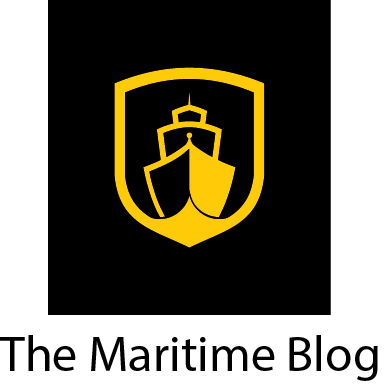search the site
Eagle Bulk Shipping Inc. Reports Eight Consecutive Quarters of Outperformance
Eagle Bulk Shipping Inc. Reports Eight Consecutive Quarters of Outperformance
in Dry Bulk Market,International Shipping News 06/03/2019

Eagle Bulk Shipping Inc., one of the world’s largest owner-operators within the Supramax/Ultramax segment, reported financial results for the three months and year ended December 31, 2018.
Highlights for the Quarter:
Generated net revenues of $86.7 million, representing an increase of 16% compared to fourth quarter 2017
◦ TCE revenues (1) for the quarter equated to $51.8 million, an increase of 15% year-on-year
◦ Achieved a TCE (2) of $12,142 for the quarter, an increase of 16% year-on-year
Generated net revenues of $310.1 million, representing an increase of 31% compared to prior year
◦ TCE revenues (1) for the year equated to $192.5 million, an increase of 34% year-on-year
◦ Achieved a TCE (2) of $11,471 for the year, an increase of 26% year-on-year
Realized a net income of $6.5 million or $0.09 per basic and diluted share, compared to a net loss of $16.6 million or $0.24 per basic and diluted share in the fourth quarter 2017
Adjusted EBITDA(3) of $23.5 million, representing an increase of 37% compared to fourth quarter 2017
Amended Shipco bond terms to allow for a maximum of $25.0 million in vessel sale proceeds to be used towards the installation of exhaust gas cleaning systems (“scrubbers”) on Shipco vessels
In January 2019, completed a $208.4 million debt refinancing, extending maturities to 2024, added approximately $65.0 million in incremental liquidity
Expanded fleet scrubber initiative, bringing the total number of vessels to be fitted to 37
Looking ahead into the first quarter of 2019, the Company has attained a TCE of $9,124 with approximately 90% of the available days fixed for the period thus far
Gary Vogel, Eagle Bulk’s CEO, commented, “I am very pleased to report that the fourth quarter represents the eighth consecutive quarter where we have outperformed the benchmark Baltic Supramax Index, or BSI. For the full year 2018, our TCE outperformance reached almost $900 per vessel per day, delivering roughly $15.0 million in incremental value based on our fleet size. We continue to execute on our fleet renewal program with the objective to optimize and modernize the fleet, and during the first quarter of 2019, we have acquired a 2015-built Ultramax and sold two 18 year-old vessels. In addition, we executed a refinancing which has allowed us to continue to strengthen our balance sheet – generating roughly $65.0 million in incremental liquidity, while lowering our cost of debt and extending maturity.”
Results of Operations for the three months and years ended December 31, 2018 and 2017
For the three months ended December 31, 2018, the Company reported net income of $6.5 million, or $0.09 per basic and diluted share, compared to a net loss of $16.6 million, or $0.24 per basic and diluted share, in the same period for the prior year.
For the year ended December 31, 2018, the Company reported net income of $12.6 million, or $0.18 per basic and diluted share, compared to a net loss of $43.8 million, or $0.63 per basic and diluted share, for the year ended December 31, 2017.
Revenues, net
Revenues, net for the three months ended December 31, 2018 were $86.7 million compared with $74.6 million in the comparable quarter in 2017. The increase in revenue was primarily due to an increase in charter hire rates offset by a decrease in available days primarily due to lower chartered in days.
Revenues, net for the year ended December 31, 2018 were $310.1 million compared to $236.8 million for the year ended December 31, 2017. Revenues, net increased by 31% compared to the prior year ended December 31, 2017 primarily due to an increase in charter hire rates attributable to an improvement in the drybulk market and increase in available days. The increase in available days was due to the acquisition of 10 Ultramax vessels during 2017 and two Ultramax vessels during 2018 offset by the sale of two vessels in 2018. The chartered-in days for the year ended December 31, 2018 were 3,294 compared to 3,353 in the prior year.
Voyage expenses
Voyage expenses for the three months ended December 31, 2018 were $24.7 million compared to $18.2 million in the comparable quarter in 2017. The increase was mainly attributable to an increase in the number of freight voyages in the current quarter compared to the comparable quarter in the prior year as well as increased bunker prices year over year.
Voyage expenses for the years ended December 31, 2018 and 2017 were $79.6 million and $62.4 million, respectively. Voyage expenses have primarily increased due to an increase in bunker prices in the current year compared to the prior year.
Vessel expenses
Vessel expenses for the three months ended December 31, 2018 were $20.1 million compared to $21.2 million in the comparable quarter in 2017. The decrease in vessel expenses is attributable to lower ownership days and lower insurance costs. The ownership days for the three months ended December 31, 2018 and December 31, 2017 were 4,303 and 4,383, respectively.
Average daily vessel operating expenses for our fleet for the three months ended December 31, 2018 and December 31, 2017 were $4,674 and $4,844, respectively.
Vessel expenses for the years ended December 31, 2018 and 2017 were $81.3 million and $78.6 million, respectively. The increase in vessel expenses is attributable to the increase in the owned fleet due to the purchase of 10 Ultramax vessels in 2017 and two Ultramax vessels in 2018 offset by the sale of four vessels during 2017 and two vessels during 2018. The ownership days for the year ended December 31, 2018 were 17,213 compared to 16,293 for the prior year ended December 31, 2017.
Average daily vessel operating expenses for our fleet for the year ended December 31, 2018 were $4,725 compared to $4,825 for the year ended December 31, 2017.
Charter hire expenses
Charter hire expenses for the three months ended December 31, 2018 were $10.2 million compared to $11.3 million in the comparable quarter in 2017. The decrease in charter hire expense was due to a decrease in the number of chartered in days partially offset by higher charter hire rates. The total chartered in days for the three months ended December 31, 2018 were 850 compared to 1,050 for the comparable quarter in the prior year.
Charter hire expenses for the years ended December 31, 2018 and 2017 were $38.0 million and $31.3 million, respectively. The increase in charter hire expenses in 2018 compared with 2017 was mainly due to an increase in charter hire rates attributable to an improvement in the drybulk market. The chartered-in operating days for 2018 were 3,294 compared to 3,353 in 2017. The Company currently charters in three vessels on a long-term basis.
Depreciation and amortization
Depreciation and amortization expense for the three months ended December 31, 2018 and 2017 was $9.7 million and $9.2 million, respectively. Total depreciation and amortization expense for the three months ended December 31, 2018 includes $8.2 million of vessel and other fixed asset depreciation and $1.5 million relating to the amortization of deferred drydocking costs. Comparable amounts for the three months ended December 31, 2017 were $7.9 million of vessel and other fixed asset depreciation and $1.3 million of amortization of deferred drydocking costs. The increase in depreciation expense is attributable to the purchase of two vessels during the year.
Depreciation and amortization expense for the years ended December 31, 2018 and 2017 was $37.7 million and $33.7 million, respectively. Total depreciation and amortization expense for the year ended December 31, 2018 includes $32.4 million million of vessel and other fixed assets depreciation and $5.4 million million relating to the amortization of deferred drydocking costs. Comparable amounts for the year ended December 31, 2017 were $29.4 million million of vessel and other fixed asset depreciation and $4.3 million million of amortization of deferred drydocking costs. The increase in depreciation expense is primarily due to an increase in the owned fleet due to the combined acquisition of 12 vessels in 2017 and 2018 offset by the sale of four vessels in 2017 and two vessels in 2018. The increase in drydock amortization expense is primarily due to additional amortization on 11 vessels, which were drydocked during the year.
General and administrative expenses
General and administrative expenses for the three months ended December 31, 2018 and 2017 were $8.5 million and $8.1 million, respectively. General and administrative expenses include stock-based compensation of $1.2 million and $1.7 million for 2018 and 2017, respectively. The increase in general and administrative expenses was mainly attributable to higher payroll related expenses due to increased head count offset by a decrease in stock-based compensation expense and legal fees.
General and administrative expenses for the years ended December 31, 2018 and 2017 were $36.2 million and $33.1 million, respectively. General and administrative expenses include stock-based compensation of $9.2 million and $8.7 million for 2018 and 2017, respectively. The increase in general and administrative expenses in 2018 was primarily due to an increase in compensation expense due to increased head count and higher stock based compensation expense in the current year compared to the prior year. The higher general and administrative expenses are reflective of the expansion of our operating platform.
Interest expense
Interest expense for the three months ended December 31, 2018 and 2017 was $6.5 million and $8.2 million, respectively. The decrease in interest expense is primarily due to a change in our debt structure with lower interest rates than the payment-in-kind interest on the Second Lien Facility, which was repaid in full in December 2017.
Interest expense for the years ended December 31, 2018 and 2017 was $25.7 million and $29.4 million, respectively. The decrease in interest expense is primarily due to a change in our debt structure, which eliminated the payment-in-kind interest on our Second Lien Facility, which was repaid in full in December 2017 offset by an increase in outstanding debt under our Ultraco Debt Facility and increase in LIBOR rates year over year on our New First Lien Facility and Ultraco Debt Facility which are exposed to interest rate fluctuations.
Capital Expenditures and Drydocking
Our capital expenditures relate to the purchase of vessels and capital improvements to our vessels, which are expected to enhance the revenue earning capabilities and safety of these vessels.
In addition to acquisitions that we may undertake in future periods, the Company’s other major capital expenditures include funding the Company’s program of regularly scheduled drydocking and vessel improvements necessary to comply with international shipping standards and environmental laws and regulations. Although the Company has some flexibility regarding the timing of its drydocking, the costs are relatively predictable. Management anticipates that vessels are to be drydocked every two and a half years for vessels older than 15 years and five years for vessels younger than 15 years. Funding of these requirements is anticipated to be met with cash from operations. We anticipate that the process of recertification will require us to reposition these vessels from a discharge port to shipyard facilities, which will reduce our available days and operating days during that period.
Drydocking costs incurred are deferred and depreciated on a straight-line basis over the period through the date of the next scheduled drydocking for those vessels. Vessel improvements are deferred and depreciated on a straight-line basis over the remaining useful life of the vessel. In 2018, 11 of our vessels were drydocked and we incurred $8.3 million in drydock related costs. In 2017, three of our vessels were drydocked and we incurred $2.6 million in drydocking related costs.Full Report
Source: Eagle Bulk Shipping Inc.



















